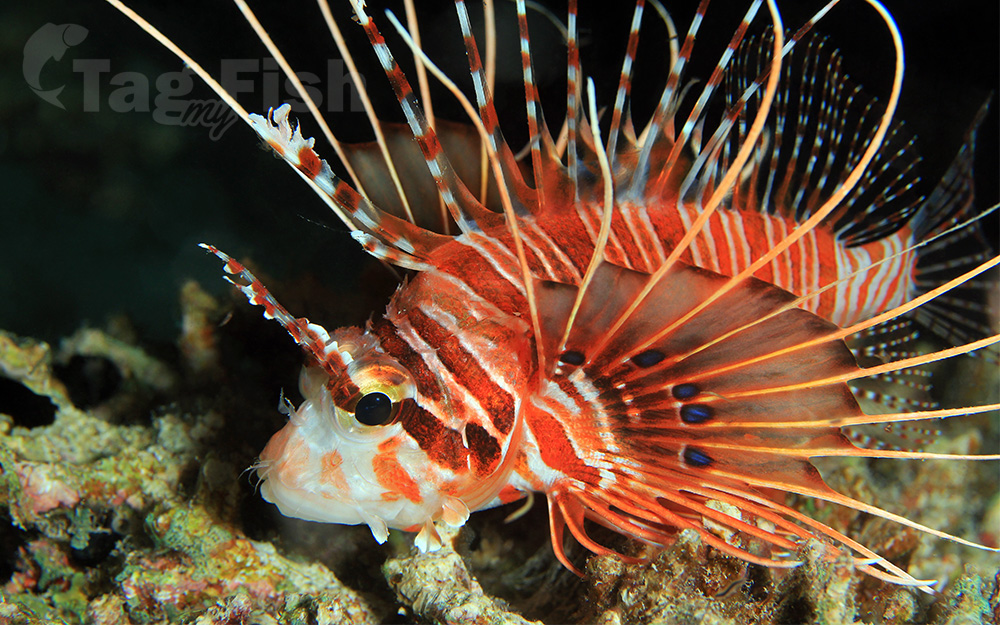Spotfin lionfish
(Pterois antennata)

Classification
General data
Pterois antennata has a laterally compressed rather deep body. There are 13 spines and 11 or 12 soft rays in the dorsal fin and 3 spines and 6 soft rays in its anal fin. There is a long tentacle above each eye. Coronal spines are present and there are many head spines. There are 17 simple fin rays in the pectoral fin.
The mouth has many teeth in both upper and lower jaws, these teeth are very small and are arranged in clusters to either side of the mouth with a small patch of the front of the roof of the mouth
This species attains a maximum total length of 20 cm (7.9 in).
The overall colour is reddish-brown marked with numerous darker slender to wide vertical bars, these are thin and angled on the caudal peduncle. There is a scattering of dark spots on the anal, dorsal and caudal fins. The head is marked with 3 dark brown bars, one of which is a diagonal bar running through the eye which ends in a large spot on the lower operculum. The long tentacles over each eye are banded and in larger adults there are bluish-black blotches close the pectoral fin bases.
Pterois antennata has a wide Indo-West Pacific distribution which runs from the Gulf of Aden south to South Africa east to French Polynesia, north as far as southern Japan and south to Australia and the Kermadec Islands of New Zealand.
In Australian waters its range extends from Fremantle in Western Australia north and east around the tropical northern coasts to at least as far south as Sydney in New South Wales. It is also found at Ashmore Reef in the Timor Sea, the reefs of the Coral Sea, the region of sea around Lord Howe Island, Cocos (Keeling) Islands and Christmas Island.
It is found at depths of between 2 and 86 m (6 ft 7 in and 282 ft 2 in) in lagoon and seaward reefs.











